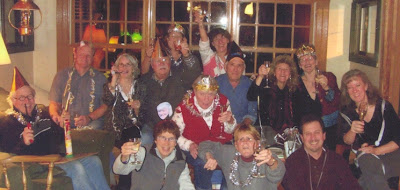Listen to the foghorn:
2:32 a.m.
2:33 a.m.
2:34 a.m.
2:35 a.m.
2:36 a.m.
2:37 a.m.
2:38 a.m.
2:39 a.m.
2:40 a.m.
2:41 a.m.
2:42 a.m.
2:43 a.m.
2:44 a.m.
2:45 a.m.
2:46 a.m.
2:47 a.m.
2:48 a.m.
2:49 a.m.
2:50 a.m.
2:51 a.m.
2:52 a.m.
2:53 a.m.
2:54 a.m.
2:55 a.m.
2:56 a.m.
2:57 a.m.
2:38 a.m.
2:59 a.m.
3:00 a.m.
Okay, I quit notating in my journal so I could try and get back to sleep. That was the morning of Sunday, January 20th. We had been in a pea soup fog for days. The weather reports showed fog burning off to sun. That happened in town, but not here on the river. Thursday night when I drove home late I could barely see more than a few feet in front of me on the road, which then gets coated in a thin film of ice.
We often hear foghorns here. I used to hear them from my forest house, haunting in the distance, from the Columbia River. I love the sound. It takes me right back to an overnight ferry ride in fog in 1983, the last leg of a summer trip bicycling through Europe, heading from Denmark back to England for the flight home. The foghorn blew all night and I was in a contented state, from the exciting summer and the anticipation of soon being home.
On Saturday, we heard foghorns as we usually do -- intermittently throughout the day and evening. I couldn't figure out, though, why they were more frequent. The sound seemed to be coming from the mainsteam Willamette River three miles away, but certainly there wasn't that much ship traffic. When I went to bed, there were still a lot of foghorn blasts and I wondered if I would get to sleep. I did, but woke up around 2 a.m. to a non-stop series of that distant blaring. Curious to keep a record and see what I could make of it, I got out my cell phone to show the time in the dark, and a journal and pen to keep track. Every minute, the foghorn blew. Finally I gave up and was able to go back to sleep.
I tried to look up what are the "rules of engagement" for foghorns and couldn't find anything. I will do more research and pursue that. Oh, I think I'll go to "Ask the Librarian" on the county library site.
Sunday morning I put in around 11:00 a.m. for a paddle in the deep fog. It was curious that I didn't hear a single foghorn for the first 1-1/2 hours. I wondered if the fog had lifted that far upriver and that's why, but it was still foggy there. As I turned to head back downriver the sun was starting to peek out. I was thinking that I hadn't seen another boat that whole time, then looked up and saw a boat headed directly toward me. I moved aside, then recognized it was the Coast Guard. A guy came out on the back deck as they pulled close to me. I asked if he was wanting to see if I had an Invasive Species Permit (I did, or of course I wouldn't have asked) but he said they were just checking on me to see if I was okay. Did I have a cell phone with me? (yes, I did) Then he cautioned, "It's low visibility today. It's a good idea to keep close to the shore." By the time I paddled all the way back to my houseboat, the fog was completely burned off and it was brilliantly sunny.

Below: Photo by my neighbor Courtney Frisse of the same view at the very top of this post. It was published in our weekly island enews Newslink in the section, "Why we live here." She's a professional fine art/craft photographer (
www.courtneyfrisse.com) and when I asked her if I could post this on my blog, she said yes and added, "I have dozens of mist photos, but this particular morning was really amazing. Lasted about 2 minutes, then got totally socked in."
January 27
Here's the response from "Ask the Librarian"
Thank you for your question regarding rules for foghorns. The United States Coast Guard has posted their navigation rules online and these may be of interest to you. Here is an excerpt of the information available on their site:
NAVIGATION RULES ONLINE
PART D - SOUND AND LIGHT SIGNALS
Rule 32 - Definitions
Rule 33 - Equipment for Sound Signals
Rule 34 - Maneuvering and Warning Signals
Rule 35 - Sound Signals in Restricted Visibility
Rule 36 - Signals to Attract Attention
Rule 37 - Distress Signalshttp://www.navcen.uscg.gov/?pageName=navRulesContent#Annexes
It may be that the horns you were hearing were coming from a buoy and not from a ship. To determine this, you may wish to contact the United States Coast Guard directly. Here is the contact information for their Buoy Tenders:
BUOY TENDERS
USCGC BLUEBELL (WLI-313)
6767 North Basin Avenue
Portland, OR 97217-3992
Tel: (503) 240-9362
_______________________
Here is an example of the many rules given under Rule 35:
Rule 35 - Sound Signals in Restricted Visibility 
In or near an area of restricted visibility, whether by day or night the signals prescribed in this Rule shall be used as follows:
(a) A
power-driven vessel making way through the water shall sound at intervals of not more than 2 minutes one prolonged blast.


















